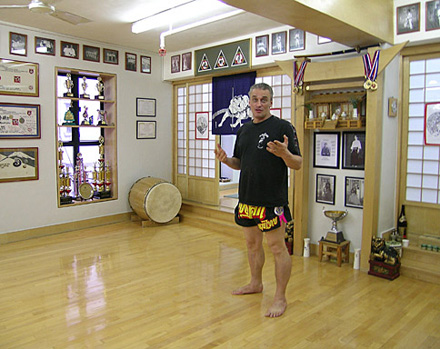
Swiss martial artist and promoter Pierre Ingrassia's Fightin' Fit, ran the largest and most successful martial arts school in Hong Kong -- and probably all of China. Every fighter of note coming through Asia made the pilgrimage to his club. Pierre was also a bodyguard to many Hollywood celebrities but in 2008, Pierre, then 45, was found dead in a hotel room. This interview was held 2-years before his death.
The most interesting thing about Pierre is his dichotomous approach. Inasmuch as he practices and teaches strict hard-core karate, he also practices and teaches boxing, muaythai and mixed martial arts.
Pierre is well-spoken and very opinionated, although I personally disagreed with him on some key issues, I respect him and his accomplishments. He's taught over 600 students, and trained such top fighters as Mario Sperry and Alain N'Galani.
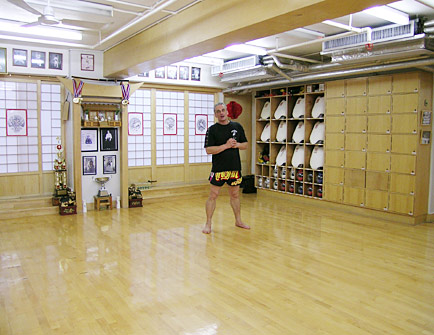
SRD: I thought I was going to meet a Frenchman, but you have a strong German accent?
Pierre Ingrassia: Well I'm from Switzerland; my mother was German and father was Italian, they gave me a French name???
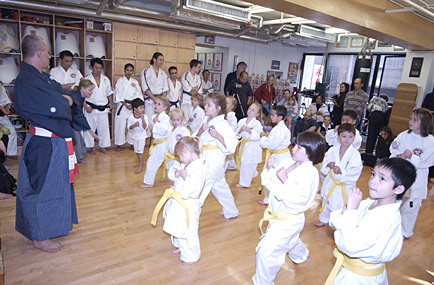
Pierre: There aren't many left, the rent in Hong Kong is too expensive; the real estate here is among the most expensive in the world. Besides it's a weak martial art.
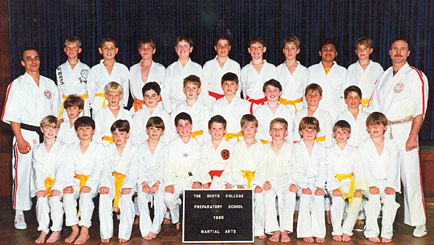
Pierre: Wing chun is an ineffective martial art that really became popular in the 1970's; in fact it started out as an incomplete one.
SRD: Are you talking about the narrow stance?
Pierre: Well that too, but look at the range, it only has one range, close-range! The stance is weak and can easily be overpowered. They punch with their bottom knuckles -- that's very weak; and their punches can easily be countered.
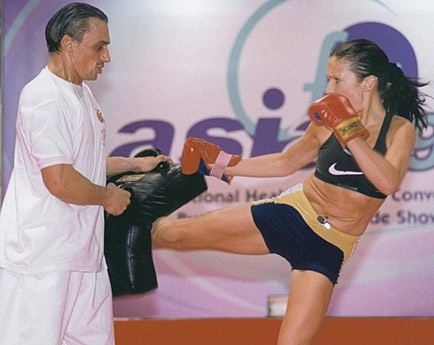
Pierre: Well, Bruce Lee created JKD because wing chun wasn't effective. But kung fu in general has no long distance, they use weapons for that range, they use medium and close ranges. Karate covers the long and medium range. Muaythai is most complete fighting art (except for the punching); they just need a little grappling to complete it.
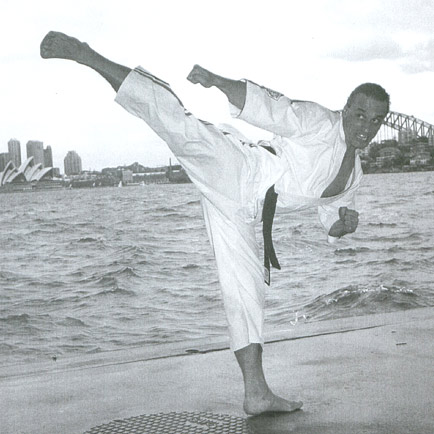
Pierre: Yes, this will be the first professional muaythai fight in Hong Kong (in 20 years). It will be held at Queen Elizabeth Stadium.
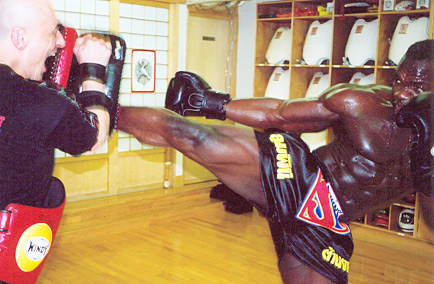
Pierre: Yes, he's the super-heavyweight muaythai champion, and he's been training with me since he came to Hong Kong. (this interview occurred before the fight)
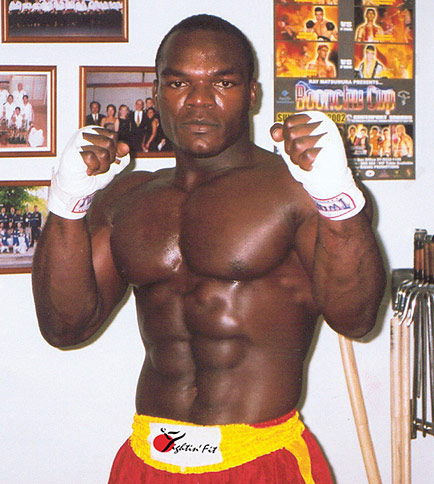
Pierre: That's an interesting story. He was the personal bodyguard of the president in his country (Ivory Coast), and while in Paris there was a government takeover, the president and everyone around him were killed, and he was stranded in France. When he arrived in Hong Kong he had additional immigration problems, but they were eventually settled and now he fights for us.
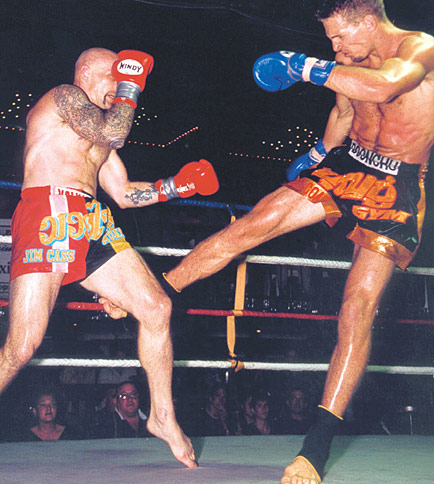
Pierre: He's a natural -- big, strong, gifted.a natural fighter.
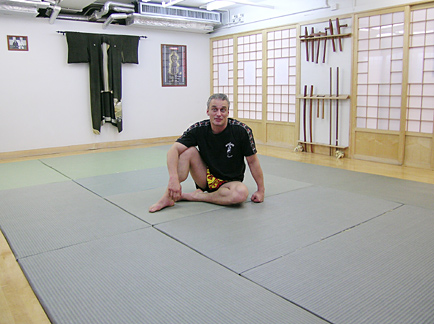
Pierre: In HK, you can't make money unless you offer many things. We teach kickboxing, muaythai, traditional (Koshiki) karate, taekwondo, aikido, boxing, and a series of fitness classes that incorporate boxing and kicking moves. I mainly do one-on-one training; the classes are secondary.
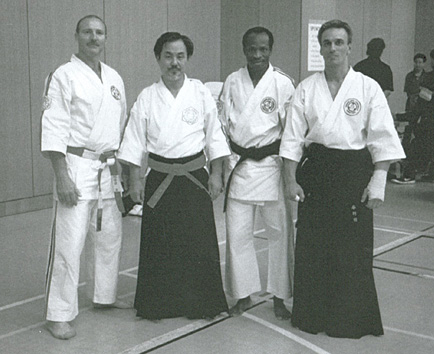
Pierre: Mainly women and expats. The kick-fit and box-fit classes are 90% women. We also offer professional massage therapy and stretching as a service.
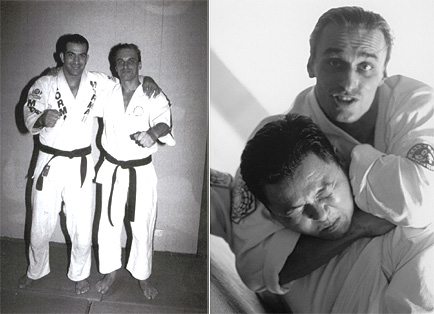
Pierre: Thank you, we spent a lot of time, effort and money to make it into one of the premier martial arts schools in Asia.
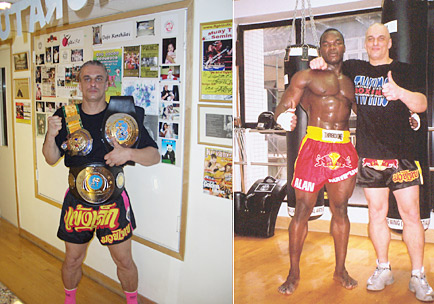
Pierre: About six years ago, before that I had a smaller school -- all my students came by word of mouth.
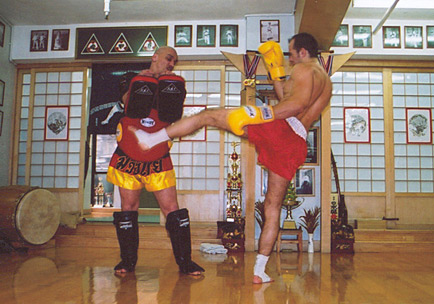
Pierre: Well like everyone else I was heavily influenced by Bruce Lee as a child. I first studied judo as a child, then jujitsu and karate. I have several black belts in these styles. I've been studying some form of fighting since I was four years old.
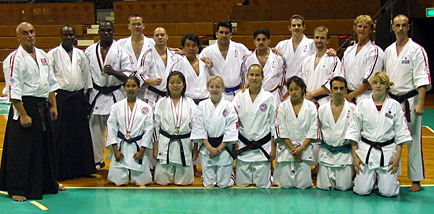
Pierre: Oh sure, I won the European Karate Championships, and got a silver medal in the World Karate Championships.
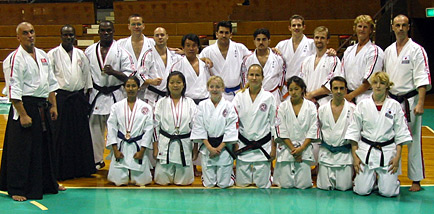
Pierre: Yes, my clients included: Tina Turner, Jean Claude Van Damme and Nicole Kidman.
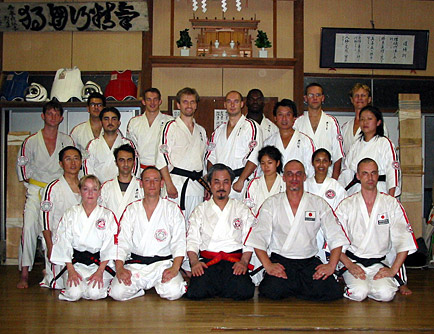
Pierre: All rules of fighting include: distancing, targeting and timing
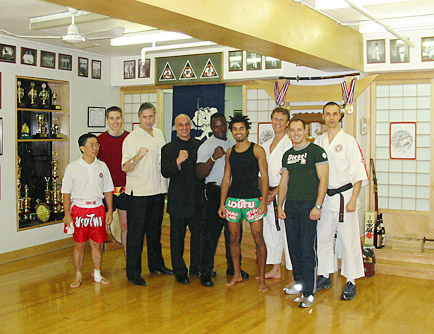
Pierre: I love it; it just has too many rules (to protect against injuries).
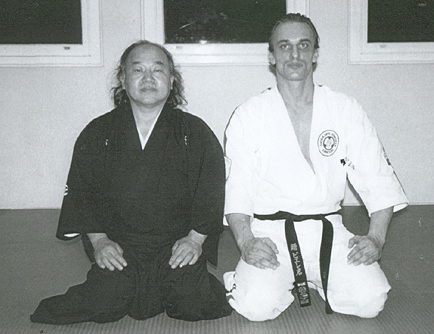
Pierre: Yes, and that's true in karate, K-1, judo, or any fighting competition. We're always dreaming of super-heroes; Godzilla said it best: Size does matter; people are only interested in seeing big boys fight.

Pierre: My preference is striking. If they allowed fulliking (including elbows) in the UFC, the sport would have very different champions. The Gracie's have never fought an elbow fighter!
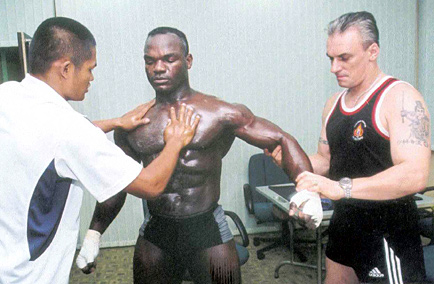
Pierre: Muaythai fighters are the best standing grapplers in the business.
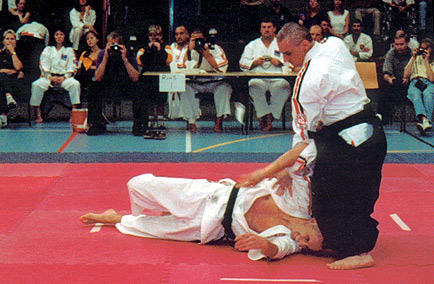
Pierre: The best modern fighter today is muaythai combined with boxing and a little grappling. The best fighters will include the offensive kicking of muaythai, western boxing for hands, the boxing guard, boxing blocks (that is evasion instead of blocking), leg blocks leg, arm blocks arm. Some western wrestling and jujitsu; use all your weapons. A good stance is kickboxer's stance, that is, a guard similar to a shooting stance. It's important to use the whole body, drop the body, full extension; these are the basic principles of physics
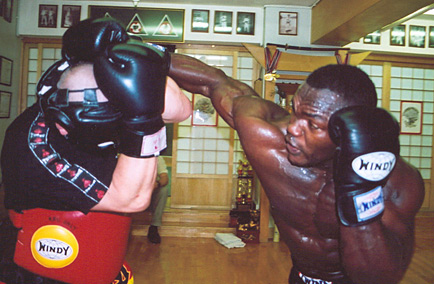
SRD: Do you guide your students in any particular way?
Pierre: I tell them to basically follow the path of one style, (whatever they choose) to be progressive and to have a goal. Also, it's very important to develop the mind. Make a plan, and as Nike says, "Just do it!"